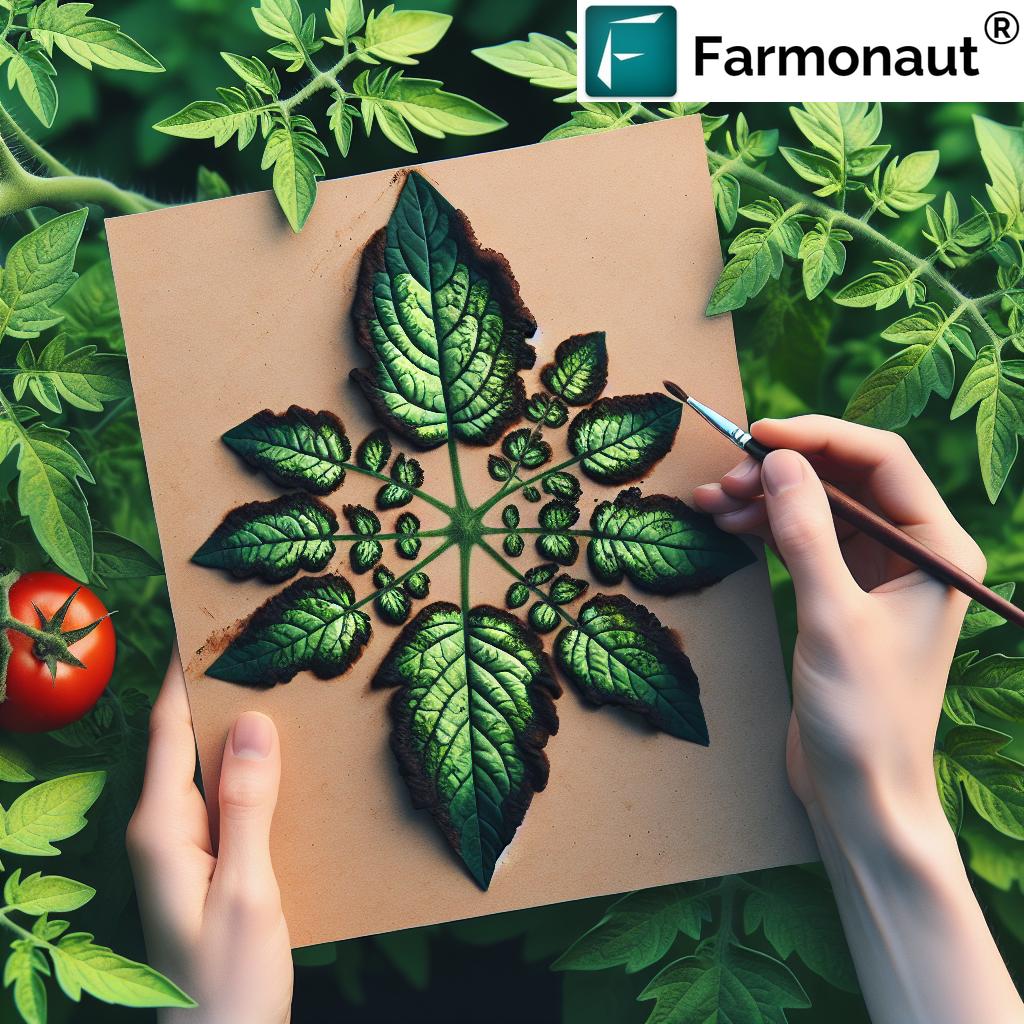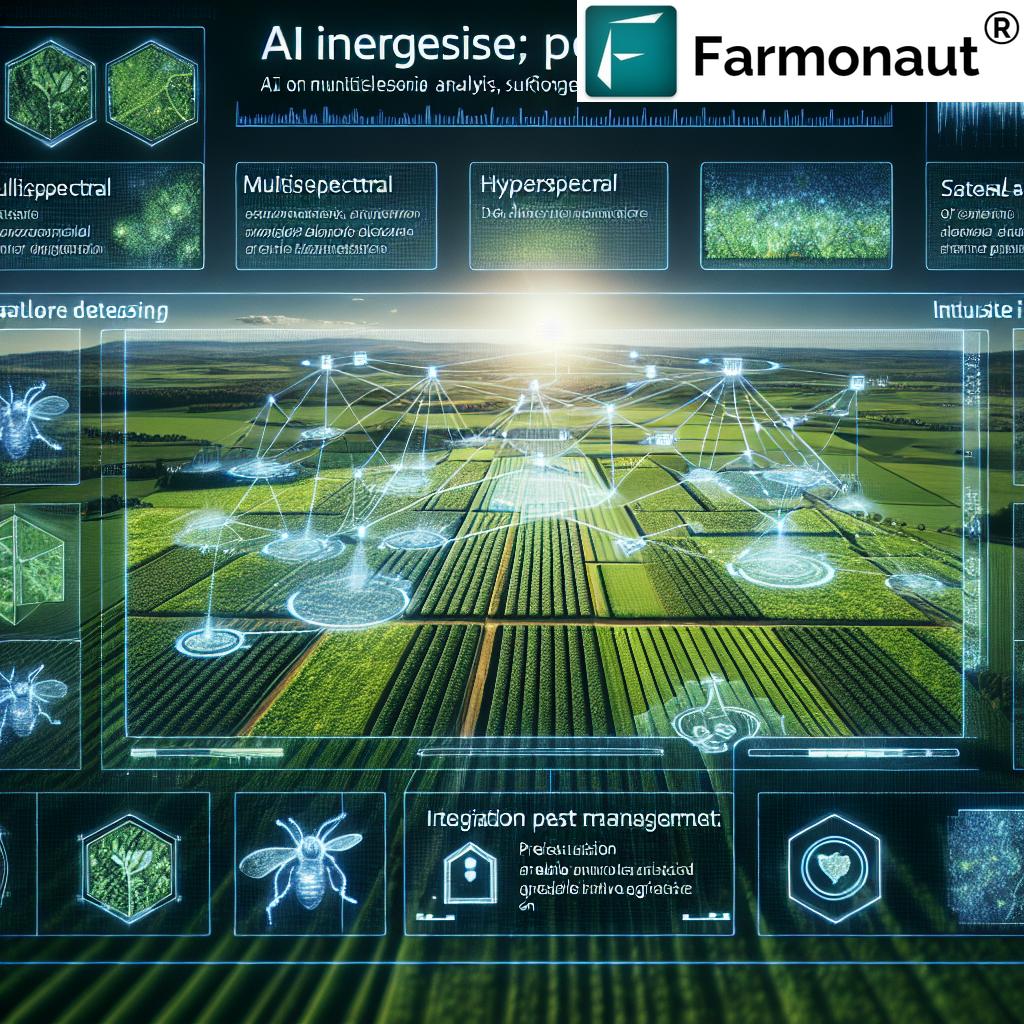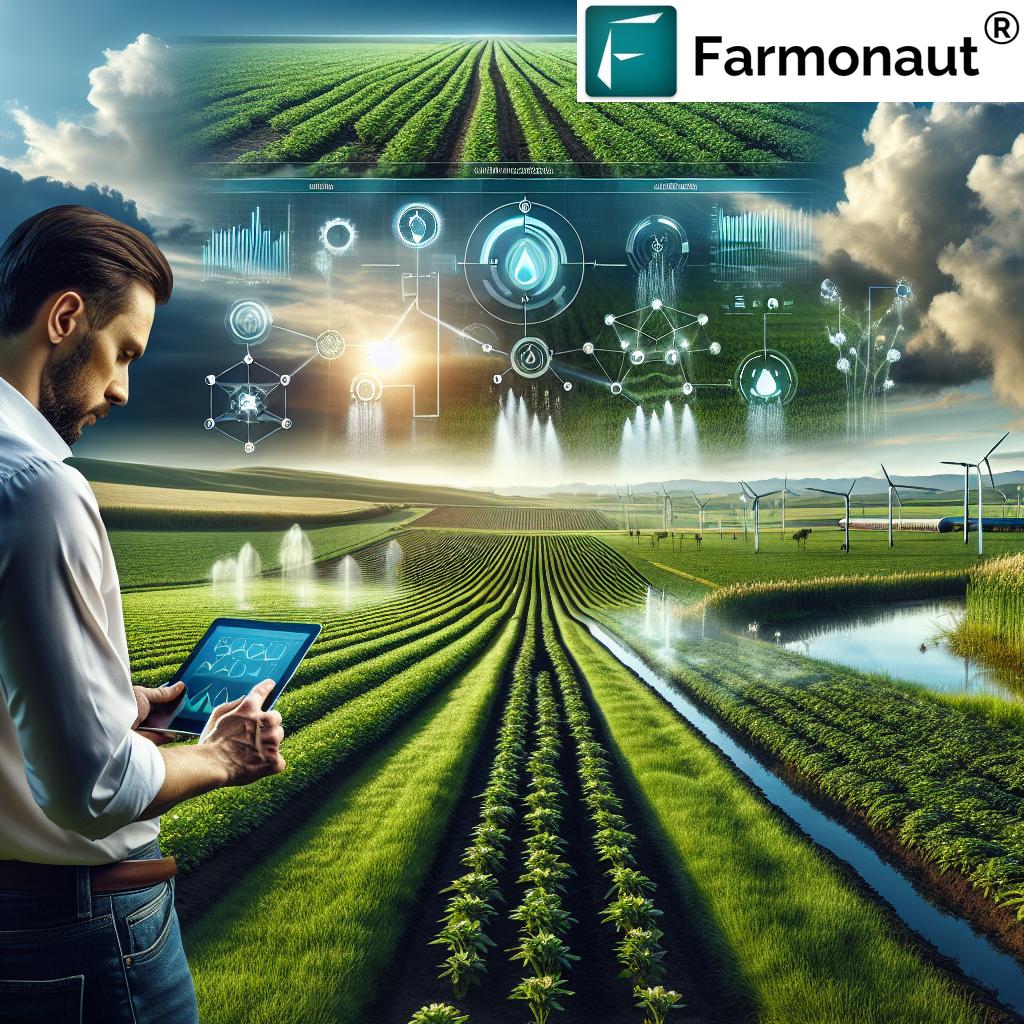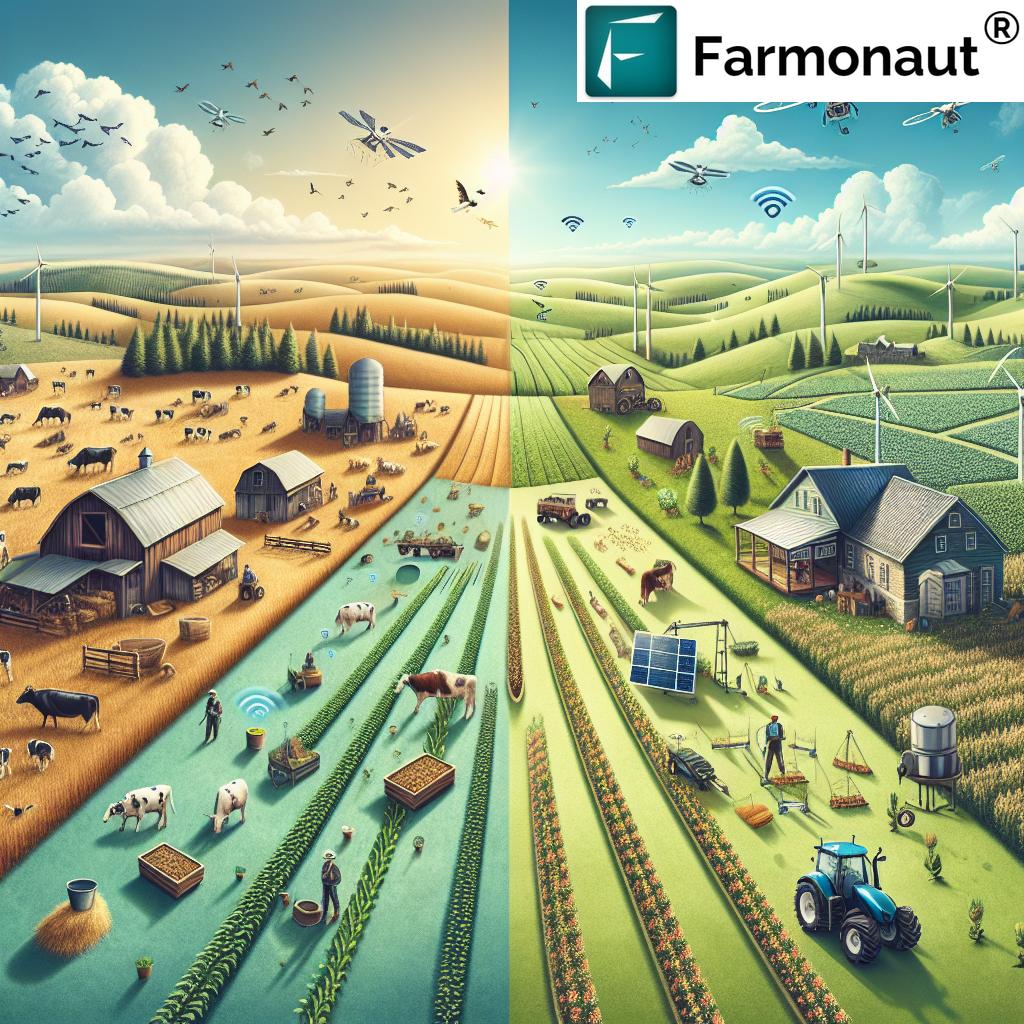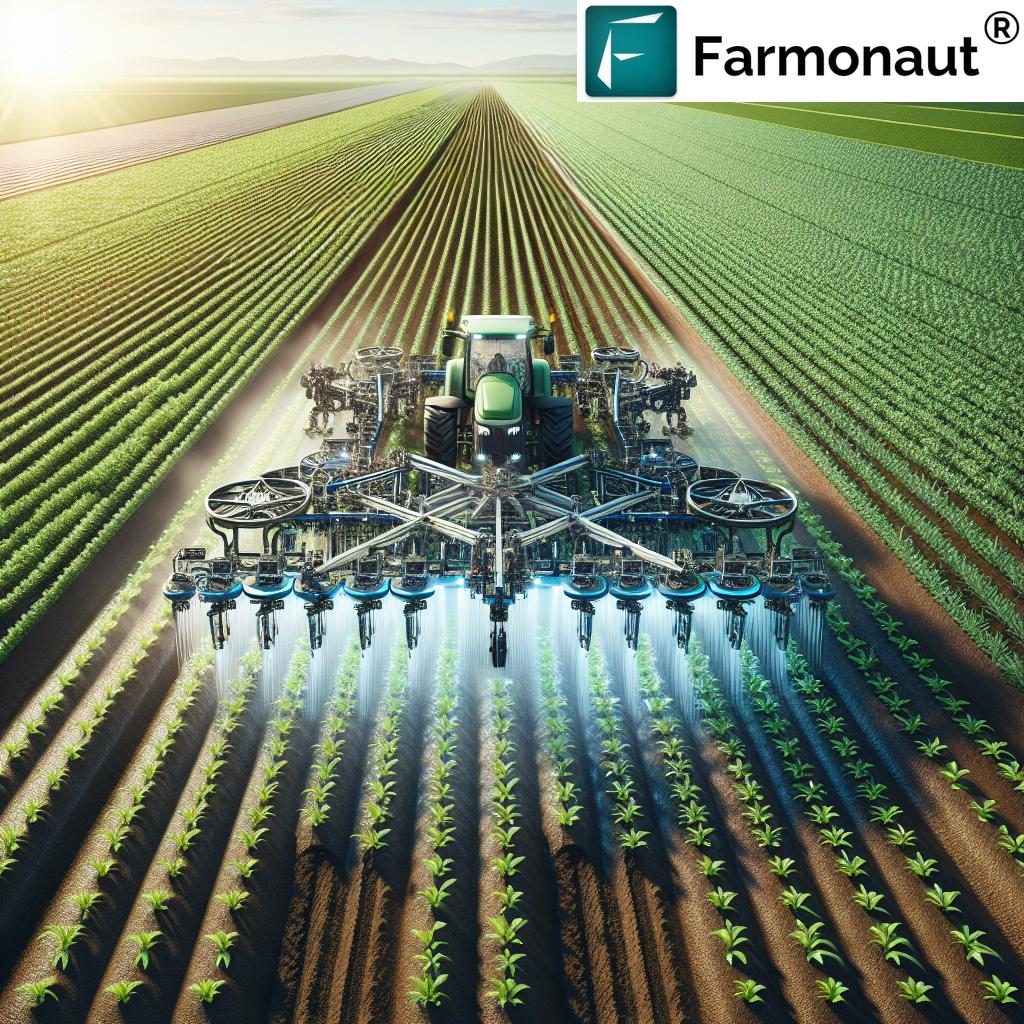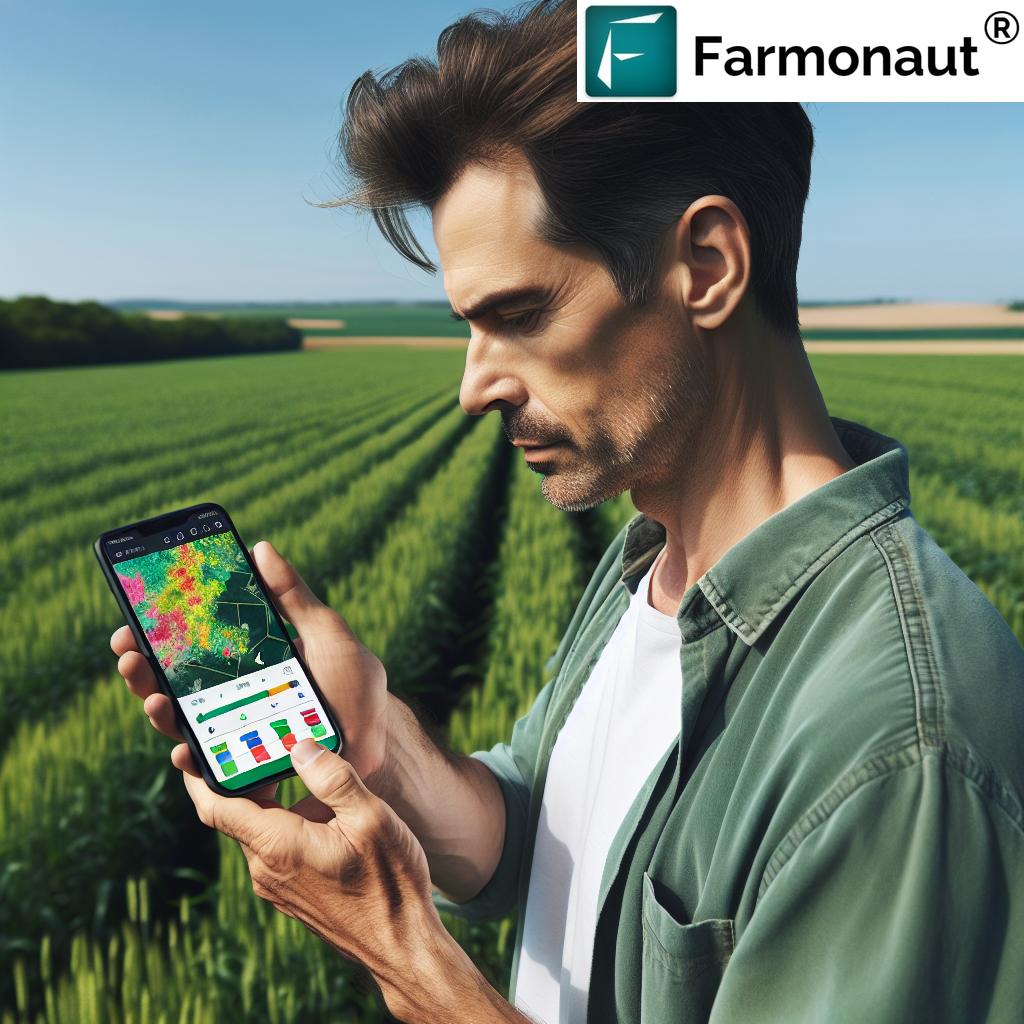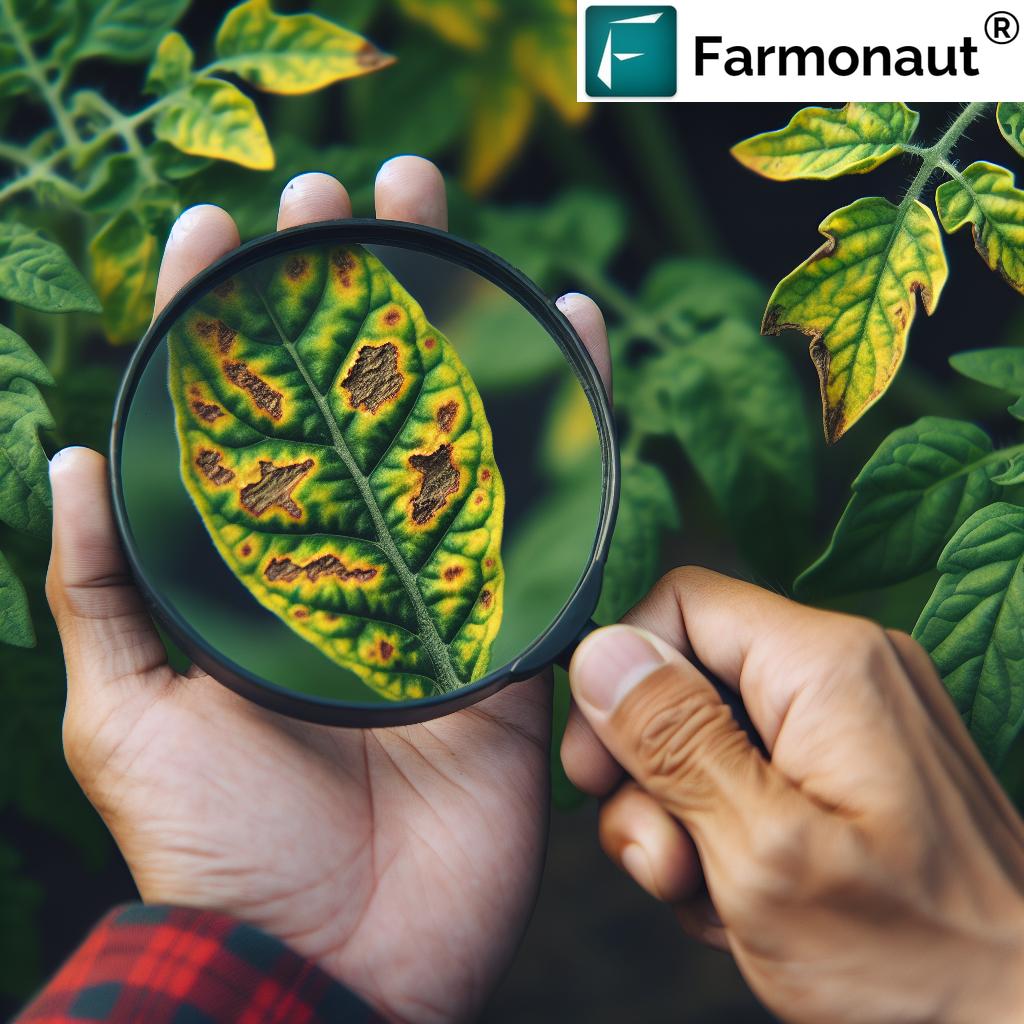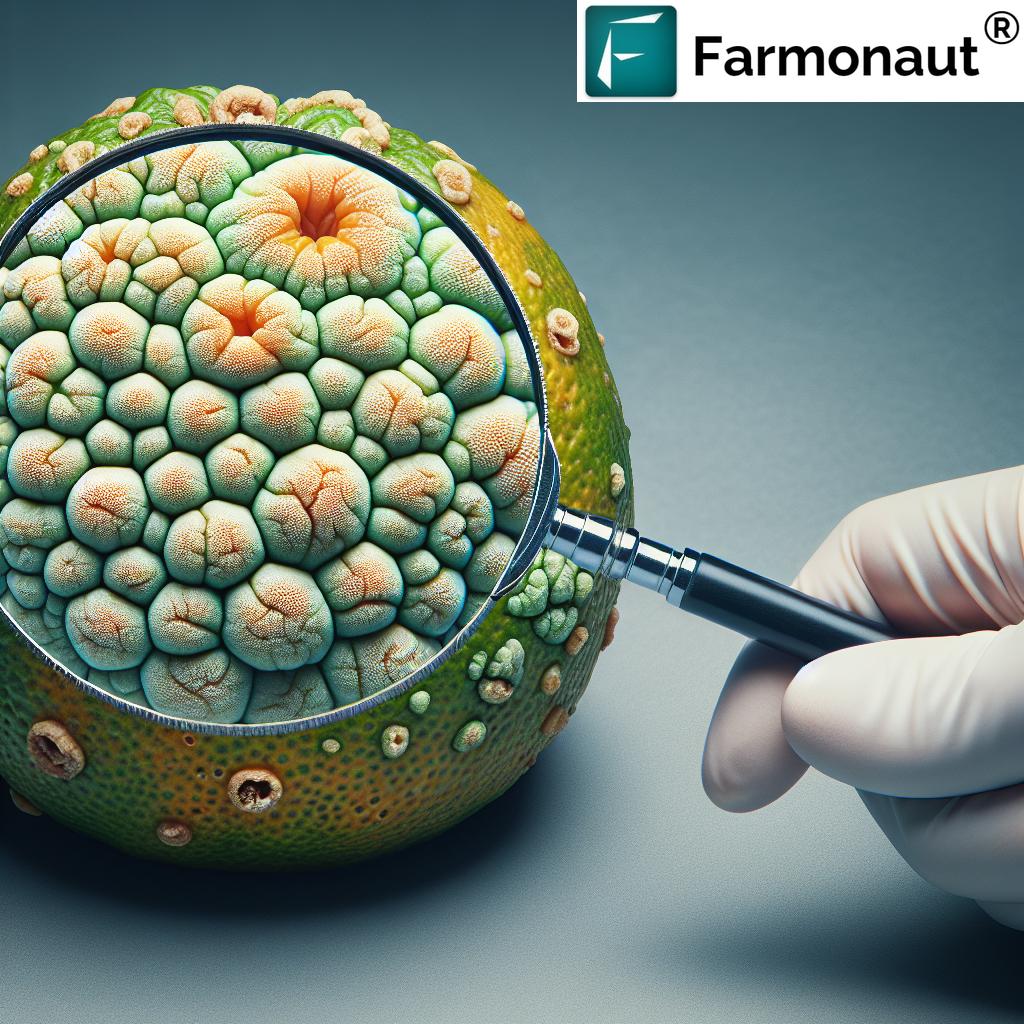Step by Step Farming: Powerful 2025 Yield Methods
- Introduction: Why Step-by-Step Farming Matters in 2025 & Beyond
- Trivia: Impact of Precision and Sustainability
- 1. Land Preparation: Foundation of Modern Farming
- 2. Selecting Suitable Crops and Seeds: The Blueprint to Success
- 3. Planting and Sowing: Precision at Its Best
- 4. Water Management and Irrigation: Resource Optimization
- 5. Nutrient Management: Smart, Informed Fertilization
- 6. Pest and Disease Control: Sustainable & Targeted
- 7. Crop Monitoring and Maintenance: Continuous Gains
- 8. Harvesting: Timely Methods Preserving Quality
- 9. Post-Harvest Management: Minimizing Losses, Maximizing Returns
- 10. Record-Keeping & Continuous Learning for Advancement
- Farmonaut’s Role: Satellite & Digital Tools for 2025 Farming
- Step-by-Step Yield Optimization Comparison Table
- Frequently Asked Questions
- Conclusion: Stepwise Success for a Sustainable 2025
Introduction: Why Step-by-Step Farming Matters in 2025 & Beyond
Step-by-step farming—sometimes called step farming or methodical farming—remains a vital backbone to global food security and rural economies. In 2025 and beyond, farming step by step is not merely tradition; it’s a sophisticated approach that integrates modern technology, smart management, and sustainability to improve productivity, optimize resources, and adapt to changing climate and global population demands.
Why this structured approach? As farmers face increasing limitations due to soil degradation, water scarcity, evolving pest threats, and shrinking arable land, a comprehensive farming guide ensures every step is optimized for efficiency, sustainability, and high yields.
In this step-by-step farming 2025 guide, we explore each phase from land preparation through harvesting, integrating the latest tools and best practices—including how Farmonaut‘s satellite technology empowers farmers to make data-driven decisions at every step of farming!
1. Land Preparation: Foundation of Modern Farming
Land preparation marks the critical, initial step of farming. This process involves clearing, removing weeds, and tilling for better aeration, water infiltration, and crop establishment. Modern step farming emphasizes precision and sustainability, moving beyond deep plowing to methods that minimize soil disturbance and prevent erosion.
Key Elements of Stepwise Land Preparation
- Clearing fields: Remove crop residues, stones, and debris to ensure smooth operations.
- Weed management: Initial weed control is vital, often using both mechanical and chemical methods tailored to crop type and local conditions.
- Tilling strategies: Conservation tillage, minimum tillage, and vertical tillage are gaining ground in 2025 for their sustainability benefits.
- Soil aeration and infiltration improvement: Modern implements and subsoilers improve water infiltration and root health.
- Precision mapping & GPS-enabled tractors: Tractors and drones map fields and optimize land preparation, reducing labor and diesel use.
- Soil testing: A crucial farming step to determine soil fertility, pH, moisture, and micronutrient levels, informing amendment and fertilization plans.
Farmonaut’s real-time soil analysis tools help farmers monitor soil conditions and plan preparation efficiently: Get started with large-scale farm management and API integrations.
2. Selecting Suitable Crops and Seeds: The Blueprint to Success
The choice of crops and seeds is a crucial step of farming. In 2025, farmers selecting seeds focus on:
- Adaptive varieties: Choose seeds and hybrids adapted to local climatic conditions and soil characteristics.
- Biotechnological advances: Genetically improved seeds offer drought resistance, pest tolerance, and higher productivity.
- Crop rotation planning: Organize farming step by step to maximize yields and maintain soil health, avoid disease cycles, and enhance profitability.
- Market intelligence: Understand market demand, seasonal factors, and global trends when choosing crops. Digital platforms provide real-time insights for informed decisions.
- Certified seed selection: Always opt for quality-assured seeds, ensuring high germination rates and vigor for the next step—planting.
Smart seed selection and crop planning can bolster economic returns by up to 18% in diverse markets.
For tailored seed and crop planning recommendations, Farmonaut’s crop, plantation & forest advisory increases resilience to climate and market volatility.
3. Planting and Sowing: Precision at Its Best
Following land preparation and seed selection, planting and sowing is the next critical step in farming. This phase increasingly demands accuracy—in placement, spacing, depth, and timing.
Modern Planting Techniques in Stepwise Farming
- Precision planters and seed drills ensure uniform planting for efficient water and nutrient use.
- Seed priming & controlled treatments accelerate germination and protect against early pests and diseases.
- Variable seeding rates adjust planting density based on soil variability, maximizing yields.
- GIS and drone-based mapping optimize field layouts for reduced resource wastage and improved productivity.
Timely, tailored planting methods ensure up to 12% yield enhancements compared to traditional broadcasting!
Unlock detailed seed placement and environmental monitoring with Farmonaut’s advisory solutions.
4. Water Management and Irrigation: Resource Optimization
Efficient water management is more important than ever, especially as climate patterns shift and population demands rise. In stepwise farming, precision irrigation strategies directly impact crop health, soil moisture, and resource sustainability.
Best Practices for Modern Irrigation
- Drip and sprinkler systems: Deliver water directly to roots, vastly minimizing evaporation and nutrient leaching.
- IoT-enabled soil moisture sensors: Offer real-time feedback to irrigate optimally and prevent overwatering or drought stress.
- Weather-informed scheduling: Integrate forecasts and satellite data (via apps like Farmonaut) to synchronize with rainfall and reduce water usage up to 30%.
- Automated control systems: Allow farmers to manage irrigation remotely for large and small fields.
Sustainable irrigation management helps maintain soil structure, supports healthy crop development, and preserves vital resources.
5. Nutrient Management: Smart, Informed Fertilization
Balanced fertilization is a vital step in stepwise farming: modern fertilizer management focuses on precision and sustainability.
Key Nutrient Management Strategies
- Soil and tissue testing: Regular analysis helps determine exact nutrient levels, crafting tailored fertilization plans for each field and crop.
- Variable-rate technology (VRT) fertilizer spreaders: Deliver nutrients only where needed; reduce input costs, environmental impact, and uneven crop growth.
- Smart fertilization planning: Data from digital management platforms (like Farmonaut) minimize overuse and maximize yields.
- Organic amendments: Compost, green manure, and biofertilizers rejuvenate soil microbiome and sustainability for long-term productivity.
Precision fertilization can decrease nutrient losses by up to 40% and improve yields by 10–15%!
Interested in carbon footprint monitoring via nutrient management? Get more sustainable with Farmonaut’s carbon footprinting solution.
6. Pest and Disease Control: Sustainable & Targeted
Continuous monitoring and early intervention are central to pest and disease control—a vital phase of step farming. Outbreaks can decimate crops and earnings, but overreliance on chemicals damages soil health and the environment.
2025 Stepwise Pest Management Approach
- Integrated Pest Management (IPM): Combine biological control, resistant varieties, and minimal chemical use for sustainable results.
- AI & satellite-based identification: Farmonaut’s monitoring platforms deploy satellite/A.I. analysis for timely, field-specific alerts and interventions.
- Targeted, site-specific treatment: Use drone/aerial application for minimized chemical drift and focused action.
- Regular scouting: Frequent on-ground and digital field inspections detect early hotspots.
- Rotation and timing: Designing crop calendars that prevent pest cycles and reduce disease carryover.
Minimize pest-related losses by over 25% while reducing chemical input through continuous, data-driven monitoring.
Build trust and traceability from production to market with Farmonaut’s blockchain traceability.
7. Crop Monitoring and Maintenance: Continuous Gains
Continuous monitoring is a hallmark of step farming, ensuring that crops stay healthy and interventions are timely.
Innovative Methods in 2025 Step-by-Step Crop Management
- Drone-based crop scouting: Drones with multispectral cameras provide regular overviews of field health, weed outbreaks, and nutrient deficiencies.
- Remote sensor analytics: Continuous data on moisture, disease risk, and development stages inform next actions.
- Digital record-keeping: Platforms assist with tracking growth, treatments, and yield projections for smart decisions.
- Mechanized weeders & sprayers: Enhance efficiency, save labor, and ensure consistent application across different farming steps.
Smart platforms like Farmonaut assist farmers in monitoring fields and responding rapidly to crop needs.
8. Harvesting: Timely Methods Preserving Quality
Harvesting is the most anticipated phase in step-by-step farming. Modern methods leverage technology to optimize timing, reduce losses, and preserve quality.
Optimal Harvesting Practices for 2025
- Mechanized harvesters: Tailored to crop type (grains, oilseeds, vegetables, or fruits) for maximal efficiency and quality.
- Sensors and data-driven triggers: Satellite and on-ground sensors measure grain moisture, weather, and maturity.
- Proper handling protocols: Rapid collection and gentle transport prevent bruising and spoilage.
Farmonaut’s harvest scheduling and remote monitoring tools help maximize quality and minimize crop losses.
Protect your investments with secure crop loans & insurance using Farmonaut’s satellite-based verification.
9. Post-Harvest Management: Minimizing Losses, Maximizing Returns
Post-harvest management is a vital, often-overlooked farming step. Even the best harvest can go to waste without effective drying, storage, and transportation strategies.
Advanced Post-Harvest Strategies 2025
- Automated drying systems: Preserve grain and produce quality, prevent mold and spoilage.
- Smart cold storage and hermetic bags: Maintain freshness, extend shelf life, and reduce food losses.
- Digital supply chain management: Blockchain and real-time monitoring platforms allow traceability, quality assurance, and faster deliveries to market.
Traceability solutions play an essential role in accessing premium markets—see more at Farmonaut Product Traceability.
10. Record-Keeping & Continuous Learning for Advancement
Maintaining accurate records is the keystone for continuous progress in step farming. This final step ensures you build upon each season’s lessons, optimizing decisions and long-term strategies.
Smart Record-Keeping Solutions
- Digital farm management software: Automate input, yield, weather, and expense records for easy tracking and analytics.
- Mobile and web apps: Tools like Farmonaut enable farmers to capture crop performance, resource use, and environmental data on the go.
- Continuous learning platforms: Access the latest training materials, advisories, and forums to stay updated with evolving best practices.
Timely analysis and adjusting future plans can increase yields and profits year after year.
Farmonaut’s Role: Satellite & Digital Tools for 2025 Farming
As a leading satellite technology company, Farmonaut empowers farmers, businesses, and governments with actionable data for each step of farming:
- Satellite-based multispectral imagery for crop, soil, and environmental monitoring.
- Jeevn AI Advisory System: Real-time, data-informed advice for weather, pest control, and irrigation.
- Blockchain traceability to build trust and transparency in farm-to-market supply chains.
- Fleet and resource management for cost-effective logistics and equipment usage.
- Environmental impact tracking for compliance, carbon reporting, and long-term sustainability.
- Mobile and web-based access: Farmonaut is available for Android, iOS, browser, and API integration, supporting diverse user needs.
Affordable, scalable, and comprehensive, Farmonaut tools support step-by-step farming in 2025, enabling users to monitor, optimize, and continuously improve every stage of production.
Step-by-Step Yield Optimization Comparison Table
| Step | Traditional Method | Step-by-Step 2025 Method | Estimated Yield Increase (%) | Tools/Technologies Used | Sustainability Score (1–5) |
|---|---|---|---|---|---|
| Land Preparation | Deep plowing, manual weed removal | Conservation tillage, GPS mapping, soil testing | 10–15% | GPS tractors, drones, soil sensors | 5 |
| Seed/Crop Selection | Heirloom/local seeds, manual selection | Hybrids, genetically improved, climate-smart seeds | 10–18% | Digital markets, AI apps, weather data | 4 |
| Planting/Sowing | Broadcasting, uneven spacing | Precision planting, seed priming, VRT | 8–12% | Seed drills, mapping apps, drones | 5 |
| Irrigation | Flood, furrow methods | Drip, sprinkler, sensor-driven irrigation | 10–15% | IoT sensors, weather platforms, automated pumps | 5 |
| Nutrient Management | Blanket fertilizer application | Variable-rate fertilization, organics, data-driven | 10–15% | VRT spreaders, digital soil analysis | 5 |
| Pest/Disease Control | Calendar sprays, broad-spectrum pesticides | IPM, targeted sprays, AI monitoring | 15–25% loss reduction | Drones, satellite analytics, smart sprayers | 5 |
| Harvesting | Manual or one-time harvest | Mechanized, sensor-driven, staged harvesting | 7–10% | Combine harvesters, remote sensors | 4 |
| Post-harvest Management | Traditional storage, open sun drying | Automated dryers, smart storage, digital tracking | 8–12% | Cold storage, blockchain, smart sensors | 5 |
Want to manage your entire farm step-by-step on mobile or web? Download the Farmonaut app:
Frequently Asked Questions About Step-by-Step Farming in 2025
-
What is step-by-step farming and why is it important in 2025?
Step-by-step farming (or step farming) is a methodical approach to managing every phase of agriculture—from land preparation through post-harvest—with the goal of optimizing resources, maximizing yields, and promoting sustainability. In 2025 and beyond, this approach leverages modern technologies like satellite imaging, digital management, and precision tools to address global climate and resource challenges.
-
Which technologies are revolutionizing step farming?
Key innovations include satellite monitoring, AI-driven decision-making, precision fertilizers, smart irrigation systems, drone-based scouting, blockchain for traceability, and automated harvesters. These enable smarter, efficient, and sustainable farm management.
-
How do digital farm management platforms improve yield?
Digital platforms (like Farmonaut) automate monitoring, mapping, record-keeping, and analytics. This makes farm operations more responsive and data-driven, reduces input waste, helps identify problems early, and optimizes each step of farming for higher, more sustainable yields.
-
What is the sustainability score, and why does it matter?
The sustainability score (1–5) evaluates practices by their environmental friendliness, resource conservation, and support for long-term soil and crop health. High scores (as seen with most stepwise 2025 methods) reflect sustainable agriculture that meets future food demands without degrading resources.
-
Where can I get more information or assistance for modern, stepwise farm management?
We recommend exploring Farmonaut’s web, mobile, and API tools for deep insights, smart advisories, and easy record-keeping to guide every step of farming.
-
How does step-by-step farming reduce input costs and environmental impact?
Precision agriculture enables accurate, site-specific application of water, fertilizers, and pesticides—minimizing waste, reducing runoff, and cutting costs by as much as 15%, as sustainability trivia highlight. New technologies enable continuous monitoring and timely adjustments.
Conclusion: Stepwise Success for a Sustainable 2025
Step-by-step farming in 2025 is more than a trend—it’s a comprehensive evolution blending time-tested wisdom with cutting-edge technologies. By embracing this structured approach—from land preparation to post-harvest management—farmers can:
- Boost yields and profitability
- Optimize resource use—water, nutrients, labor
- Ensure food security and sustainability
- Strengthen resilience to climate challenges and market fluctuations
Farmonaut stands as a trusted provider of advanced, affordable satellite-based insights, supporting continuous monitoring, AI-driven advisories, and data-centric management at every farming step. By integrating the latest digital platforms, smart tools, and sustainable practices, the world’s farmers will continue to meet global food demands efficiently and responsibly.
Embrace step-by-step farming in 2025—and transform your farm into a beacon of productivity and sustainability for the future!





